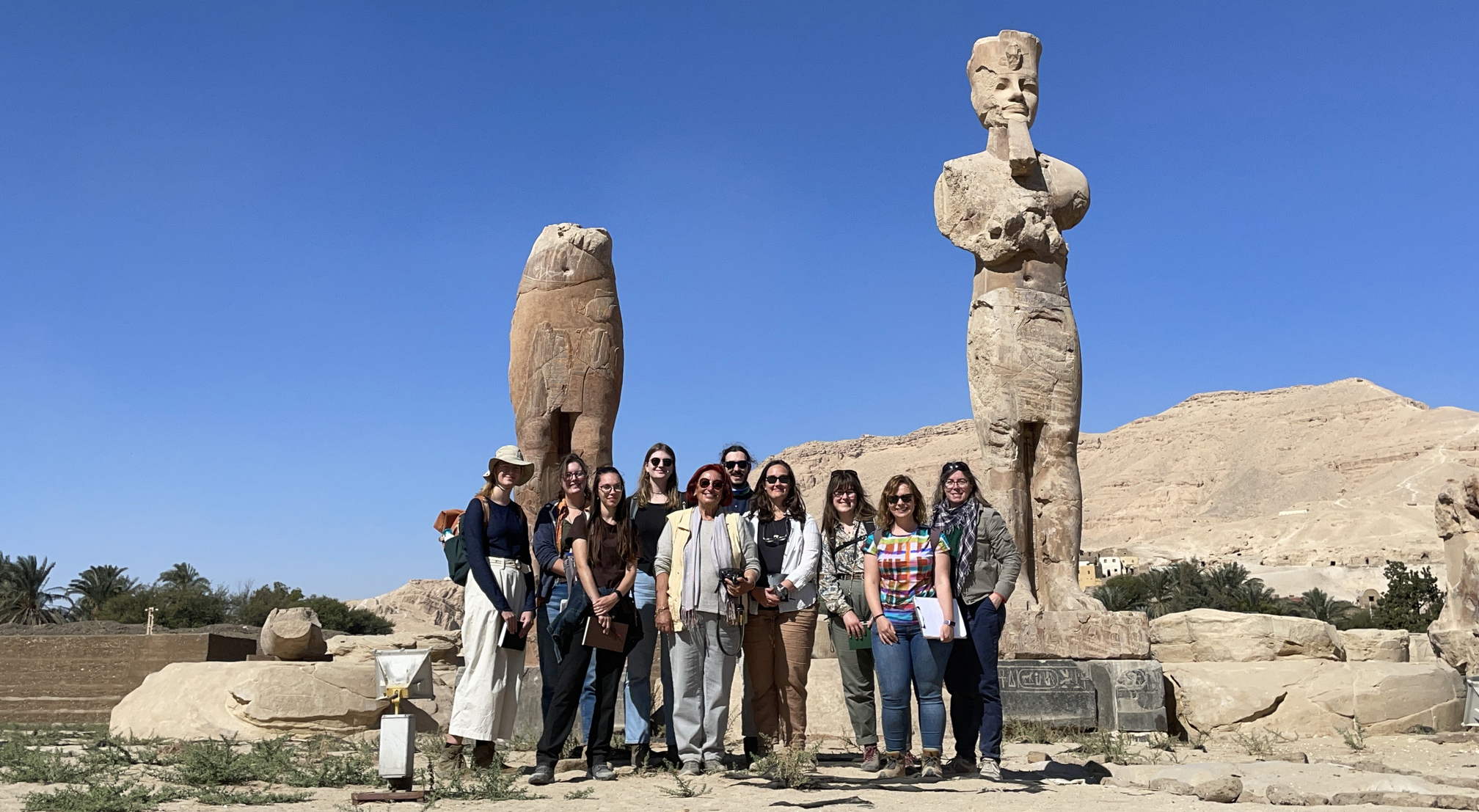Week 4: 29 January–4 February
Our second week in Luxor was also filled to the brim. We started our week with a trip to Kom Ombo, the road towards which was very interesting and bumpy. When we arrived at Kom Ombo we met Irene Forstner-Müller, who gave us a full tour of the site introducing us also to the various people working there. We saw the remains of the earliest occupation in the Old Kingdom to the most recent one with the 19th century British fortress. As it was a hot day, we took a coffee and tea break during which we got to know each other better. The team had to go back to their work and we walked through the temple of Sobek and Haroeris. Afterwards we visited the Crocodile Museum which has an impressive collection of crocodiles and other objects related to Sobek, and then headed back to Luxor.

On Monday we first met José Manuel Galán from the Spanish Djehuty Project in Dra Abu el-Naga. He explained to us how they work and what the layout of the site is, after which we went into the tomb of Djehuty. They were in fact preparing the site for the opening to the public next week. Then another Spanish mission was on the schedule: the C2 Project, Royal Cache Wadi. The entrance to the Royal Cache (DB320) is hidden between the cliffs, so in order to see it we had to climb high and steep. It was another hot day, and it did not help that we climbed a lot today so by the time we got to visit the tombs of the nobles everyone was tired and sweaty. Nonetheless Kiki did a great job with her presentation at Qurnet Murai and about the tomb of Huy.



The next day we first went to el-Mo’alla where we visited the tomb of Ankhtifi. We saw some interesting paintings on the wall a rabbit carried towards it’s final destination and fish and flowers iin a very light blue colour. Then it was time to drive towards Elkab where we first visited the New Kingdom tombs before we went into the desert. At the Vulture Rock Hilde gave her presentation about the Old Kingdom graffiti and afterwards we climbed on top of the rock. Although it is not an easy climb, the view is breath-taking. We ended the day at the Amenhotep III chapel and the temple of Shesmetet.


Wednesday started with a slight switch in our program: we first went to meet Jaap van Dijk in the Mut Temple. He told us in depth about the history and function of the temple, where still many Sekhmet statues are standing. In the Centre Franco-Egyptien d’étude des temples de Karnak (CFEETK) we met the director Luc Gabolde who told us about his long history with Karnak and the many projects they worked on and are currently working on. Then it was time for my own site presentation of the Akhmenu of Thutmosis III and the Hypostyle Hall. To end the day, we visited Chicago House, where Brett McClain gave us a full tour of the facilities including the library. What a beautiful place it is! Krisztián Vértes showed us his digital epigraphy workflow in his studio and followed up on his explanation at Luxor Temple last Saturday about his work on the Roman frescoes and the 18th Dynasty reliefs.

Our last full day at Luxor started at the Colossi of Memnon, which used to flank the gate of the first pylon of the mortuary temple of Amenhotep III. At the site we met Hourig Sourouzian, she and her team have been working there for more than 20 years aiming to restore the stone monuments. Even though the mortuary temple is now mostly in ruins, she gave us the tools to really see how big it was in antiquity.

After that it was time to go to the tomb of Paneshy where we met Suzanne Onstine. She explained to us that Panehsy was a priest of the mortuary temple of Amenhotep I. You could see in the tomb that it was also dedicated to the Chantress of Amun who happened to be his wife. Another interesting feature in this tomb was that the chamber had been filled with many burials and the tomb set on fire by robbers.

Next we visited Carter House, recently restored by ARCE, and we could see a glimpse of how Howard Carter lived while he worked at Thebes. We ended there with a visit to the replica of Tutankhamun’s tomb which would fool everyone who did not know it was a replica. Finally it was time to head to the Valley of the Queens, where not only queens were buried but also princes. Laura gave her presentation in the tombs of Khaemwaset and Amenkhopshef and we ended the day in the tomb of Nefertari. Even though we were only allowed in for 10 minutes, it was definitely worth it. There were so many well preserved details and vivid colours in the tomb.


All good things come to an end and so did our time in Luxor. It was time go back to Cairo, a long bus trip after which we arrived at NVIC in the evening. We all went back our apartments for some well-earned rest. The day off on Saturday was a welcome break after the intense week we had in Luxor. We relaxed a bit, slept in but also did laundry of two weeks. However, not everything was relaxing because one of the apartments had a new challenge: turning on the lights in the bathroom short-circuited the apartment. But never dull a moment in Cairo! Tomorrow a new week starts with renewing our visa.
Cher van der Woude

